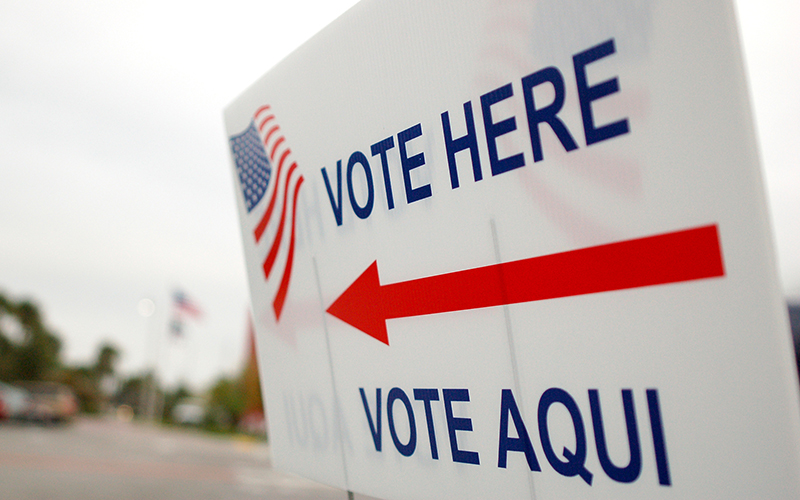
Latinos could account for almost 1 million voters in Arizona this year, but the presidential campaigns have spent relatively little on Spanish-language television advertising, according to a review of Federal Communications Commission filings on the ads. (Photo by Erik Hersman/Creative Commons)
WASHINGTON – If Donald Trump and Hillary Clinton are waging war over Arizona’s nearly 1 million potential Latino voters, it doesn’t appear to be an air war.
A review of Federal Communications Commission filings by Spanish-language broadcast stations in the state shows that Clinton, the Democratic nominee for president, invested in Spanish-language ads that aired days before Arizona’s presidential preference primary in March and picked up again recently.
Trump, the Republican nominee, is absent from the filings, although station compliance with the FCC reports is spotty.
The FCC filings do show significant Spanish-language ad buys in the Senate race, with order forms on file from the campaigns of both Sen. John McCain, R-Arizona, and his Democratic challenger, Rep. Anne Kirkpatrick.
But experts were not surprised by the presidential ad buys, saying they could reflect the fact that the campaigns are not focused on those voters or they do not think broadcast television is the right medium to reach those voters.
The Trump campaign in Arizona referred questions to the Arizona Republican Party, where spokesman Tim Sifert said televised ads just are not as good an investment as getting out and knocking on potential voters’ doors.
“You’re spending a tremendous amount of money to not necessarily reach the voters who are going to be participating in the election,” Sifert said of TV ads. “Political parties get much more bang for their buck by relying on mail and our traditional get-out-the-vote efforts, meaning traditional door-knocking and canvassing.”
But experts on political advertising say the presence or lack of TV advertising could have more to say about who the candidates are targeting rather than how they’re targeting them.
“The lack of Spanish ads shows that perhaps Hillary Clinton thinks that she has the Latino vote already secured and that Donald Trump recognizes that that is a demographic he’s not going to win,” said Kathryn Brownell, assistant history professor at Purdue University.
“Advertisements tend to show the demographic that the candidates are trying to reach, not necessarily the ones that they already have in their camp,” Brownell said.
But with 992,000 Latinos eligible to vote in Arizona on Election Day, according to estimates from the Pew Research Center, leaders in the Hispanic community say investing in Spanish-language ads would be a good idea for presidential candidates interested in winning the state.
“It always is helpful to engage in Spanish-language advertising in communities where there’s opportunity to engage Latino voters more,” Lizet Ocampo, director of Latinos Vote!, a program of the People for the American Way.
The FCC filings are far from a complete picture of the ad campaign in Arizona. While the commission requires that stations make records of political ad buys available on line, it leaves it to the stations to upload files onto its website. Not all stations upload the three proper forms, or do so in a timely fashion – filings are often uploaded days or weeks after ad purchases were made.
But Ocampo said the relative lack of spending by Clinton’s campaign isn’t surprising, noting that it could have been a result of a “prioritization of resources” by the campaign in favor of states like Nevada and Florida with larger Latino populations.
“(Trump) hasn’t been spending that much money on ads in general, either English- or Spanish-language ads,” Ocampo said. “Obviously, he says he’s reaching out to the Latino community with ‘Latinos for Trump,’ but it doesn’t seem like there’s much evidence there.”